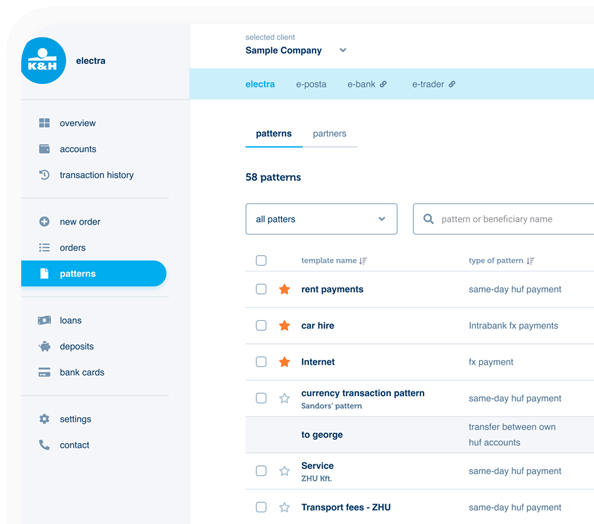Last Call: Transform with UX or Be Eaten by Revolut
The arrival of Revolut and similar Fintech companies onto the scene is not just temporary market noise, but a shift that is fundamentally shaking traditional banking operations. Although many traditional financial institutions seemingly see the danger – every banker knows Revolut is coming and many are using it – genuine, profound responses are often delayed or insufficient. Today, it's no longer enough to merely introduce new features one after another; the quality of the user experience (UX) and a company's UX maturity can determine which banks will survive and be successful in the long run. Simply put: developing UX maturity is not a "nice-to-have-someday" project, but a critical strategic issue.
While many traditional players still think of Revolut and similar neobanks as secondary providers that people use for things like currency exchange, not considering them serious, primary banks, the numbers tell a different story. Brazil's Nubank, for instance, already has over 100 million customers in Latin America, while Chime boasts over 22 million in the USA, with half of its users already treating it as their primary bank.
Revolut's user base has also surpassed 50 million worldwide, and according to an internal survey in Hungary, 40% of respondents already envision it as their potential primary bank – a surprisingly high proportion indeed. Revolut is already in such a comfortable position in the Hungarian market, where its user base swelled from 50,000 to 1.5 million in six years, that it can afford steps like charging higher fees for weekend currency exchange. While this practice has been discontinued in many countries due to natural customer aversion, it hasn't been abolished in Hungary, as the company continues to grow regardless. This confidence is also reflected in Revolut’s pan-European rollout of their top-tier, and correspondingly very expensive, Ultra premium plan – demonstrating their trust in a loyal and, importantly, a paying user base, even amid fierce market competition.
 Fintechs can siphon off customers (created with MidJourney)
Fintechs can siphon off customers (created with MidJourney)In contrast, the reactions of traditional banks reveal a noticeable gap between fear and action. They recognise the threat and talk about it, but genuine, profound, customer-centric responses are often delayed or completely absent. However, time is pressing. Revolut and similar Fintech companies (besides Nu and Chime, names like Wise, N26, Monzo, and Bunq are also worth mentioning) pose a genuine threat. They can siphon off customers, especially digitally savvy and younger demographics, thereby undermining the customer base and long-term profitability of traditional banks. The question is not if a response is needed, but when and how.
The Secret to Revolut's Success: Why Customers are Switching
The success of neobanks is often simplistically attributed to excellent UX and attractive prices. While these are important, and Revolut indeed has strong, reliable functions and good prices, their success is rooted much more deeply:
- Conscious Strategy and Investment Behind UX: Revolut can provide world-class UX even without localisation. In contrast, traditional banks spend a great deal of money developing separate net banking, mobile banking, and internal systems everywhere, partly due to genuine local specificities. But often, completely identical functions are redeveloped repeatedly, frequently because different banks were acquired in other countries. These systems run on different platforms and are only weakly integrated, facing huge resistance to centralisation. Revolut has no such issue; it can offer a relatively uniform, good solution to everyone. Good UX at Revolut didn't happen by chance; it was built carefully and consciously.
- Genuine User-Centric and Data-Driven Operations: Revolut makes data-driven decisions. They sophisticatedly analyse where users get stuck, how quickly they reach something, and what they tap on. In contrast, at most companies, including large banks, data analysis is often performed poorly. And even then, it's primarily sales-focused – for example, on what the conversion rate is for a loan product's online application. A user-centric mindset is fundamentally lacking; at best, they are moving towards technology-centric thinking, but even that is a very distant goal.
- Uniform Experience and Fast Iterations, Constant Development: Revolut provides a uniform experience in all markets, which is also good because if a user moves to another country, they don't have to learn a new, complicated banking system. They develop with fast iterations, in an agile way, constantly testing, gathering user feedback (both qualitatively and quantitatively), and refining the product based on it. This is in stark contrast to the slow, multi-year development cycles often characteristic of traditional banks, where a new feature or interface can take years to prepare and may already be outdated or not fully cover real user needs by the time it reaches the market.
- New Digital Products Offensive: Revolut is continually expanding with products like mortgages, which have already been introduced in Lithuania and will operate digitally in Ireland. Their investment product, the Invest app, is available in Greece, Denmark, and the Czech Republic. Remember, banks previously claimed that mortgages would never be digital – here's the refutation. In Norway, for example, a company called Bulder has already developed such a product, so anything is possible.
Meanwhile, banks often cling to the past, with an observable over-reliance on or hope in physical presence (branch networks, ATMs), the protection of the regulatory environment, and (often non-existent) customer loyalty. Trust is indeed important, but once a customer has an account, the service becomes easily accessible, and they have a history with the provider, this factor becomes less and less significant. Revolut has also been on the market for nearly 10 years. And the personal advisor – let's be honest – in most cases, gives formulaic advice on behalf of the bank. They won't discuss with the client how to buy Korean stocks or Zimbabwean investment funds, but will only present the products currently being promoted. Artificial intelligence (AI) will be much better at this because it can adapt more effectively to individual needs and interests.
Traditional Banks: Lagging in UX and Digital Maturity
 UX maturity: how deeply user-centred design has been integrated into the company (created with MidJourney)
UX maturity: how deeply user-centred design has been integrated into the company (created with MidJourney)Although the banking sector has indeed taken steps towards digitalisation in recent years, this often proves insufficient in international competition, especially against Fintechs. Historically, players have competed more with each other, and the main goal of many banking digital projects was to "have" every feature that competitors also had (e.g., online account opening, mobile payments).
Most banks recognise the importance of UX but often handle the solution superficially: "Let's create a UX department, hire X number of UX specialists, and then everything will be fine." But this is not the case at all. The real, deep-rooted problem is the low level of the organisation's UX maturity. This concept expresses how deeply user-centred design has been integrated into the company's culture, processes, and strategy.
According to the Nielsen Norman Group model, there are generally 6 levels of UX maturity (this is not the only possible scale, but it is quite frequently used):
- Absent: UX is completely ignored or unknown.
- Limited: UX work is ad hoc, occasional, an isolated attempt without strategy.
- Emergent: The importance of UX is recognised, there are dedicated efforts, but methods and processes are not yet uniform, and the impact is limited.
- Structured: The organisation has established UX processes and methodologies; UX work is organised, but not necessarily optimal or fully integrated yet.
- Integrated: UX is organically incorporated into product development cycles, UX research and design are routine, and teams work together effectively. UX also appears at a strategic level.
- User-Driven: The entire organisation's culture and strategy are organised around user needs. UX is proactive, data-driven, and involved in the highest-level decision-making.
Most traditional banks are at around level two or three; four at most. This means that activities related to UX are often ad hoc; they are not strategically embedded in the organisation's operations, and do not form the basis of decision making.
Dimensions of UX Maturity
There are also various dimensions along which development can differ. For example, there might be an organisation with an extremely good team working with good methods, but the corporate design culture is lacking, there is no design strategy, and so on.
- Design Strategy: Is there a clear, top-management-supported design strategy that defines what products are developed, in what direction they are heading, what their overall concept is, and what features they have? This is almost completely missing in most places.
- Tools: Do they use modern design systems, frameworks, internal knowledge bases, and handbooks?
- Training, Education: Is there continuous training for employees? And here, we should not only think of UX specialists but the entire organisation, including product owners and business leaders (for whom it can be a major problem that they are not sufficiently familiar with these areas).
- Culture: How important is user centricity? How accepted is it? How well does it work?
- Methods: Do they apply standardised, effective design and research methodologies? Which of these do they apply, in what order, and to what extent?
- Governance: How standardised and regulated is the operation? A common problem is that, as many designers as there are, they all work differently.
- Team: It's not the size of the team that matters (it's a misconception that the larger the team, the better the UX will be), but the expertise. A 15-person team of highly senior individuals, supplemented by two juniors, can achieve much more than a disorganised 100-person team.
- Measurement: Do they regularly measure UX and its business impact?
Why UX Maturity Matters
The classic banking competition is comparable to a lower-tier football league; the players fight among themselves – but when stronger teams enter the market, these players are clueless. And users switch because small problems add up, demands are ever-increasing, and they are moving more and more towards digital solutions anyway. Previously retentive services, like mortgages, can become devalued if they can be easily obtained anywhere. UX maturity is more important than good product UX because a UX-mature team can keep on creating many good products, whereas a product that happens to be good will eventually become obsolete. Excellent UX is now a competitive requirement, not an extra.
We checked how many people at a given bank mention UX on their LinkedIn page. Based on this, average European banks show a value of 0.5%–1%, European leaders (e.g., ING, Česká Spořitelna, DNB) 2%, neobanks (e.g., Kakaobank, Revolut) 4%–8%, and market-leading neobanks (e.g., Nubank, Paytm, Chime) over 8%. This is, of course, a very ad-hoc UX maturity metric, but it's still better than just counting UX specialists, because here, it's not the size of the team that matters, but how much knowledge and mindset permeate the organisation.
How UX Maturity Can Be Increased
 The balance between the user, technology, and business, the classic triumvirate of design (created with MidJourney)
The balance between the user, technology, and business, the classic triumvirate of design (created with MidJourney)Recognising the situation is the first step, but it's not enough on its own. Banks need to move from slogans to concrete actions. To do this, the balance between the user, technology, and business aspects (the classic triumvirate of design) must be restored. Alongside technological feasibility and business goals, user needs and expectations must be given equal importance. Systemic change is needed, not cosmetic fixes. The goal is user-centric transformation, not just digital transformation.
- Real Assessment: An honest and thorough diagnosis is needed – using measurements, interviews, even Lego Serious Play. It's important that in an organisation not only leaders are consulted; this should be done more broadly with biases in interviews or questionnaires compensated for.
- Importing International UX Knowledge: Local banks typically develop specialists in-house or recruit them from other countries. If they could also incorporate the experiences of internationally recognised UX stars – for example, those from Norwegian, American, or Dutch innovation centres – it could supplement their existing local expertise with strong, up-to-date, practical knowledge.
- Training, Standards, Team Development: The change must be underpinned by targeted training (for the entire organisation), uniform standards introduced , and teams strengthened with appropriately skilled specialists.
- UX Strategy with Top Management Support: The UX strategy must have support at the highest management levels. This doesn't necessarily mean that a UX vice president should sit next to the CEO and whisper the importance of UX in their ear, but it is essential that UX specialists appear at much more serious levels. For example, in a large bank, there should be someone representing this at least at the third level below management – but there is almost no example of this today.
- AI Integration: New technologies, like AI, should be consciously integrated into UX processes.
Conclusion: Act Now
What happens if nothing changes? On one hand, neobanks also compete with each other (e.g., Revolut attacked Nubank in Colombia, and Nubank moved to Mexico to strengthen its position there, and is also expanding in Saudi Arabia), which means there will be a bloodbath among neobanks, too. Whoever survives will be even stronger. If Nubank, say, has 500 million users, and Revolut has 200 million, what will a small local bank with 8 million do in comparison?
It's conceivable, therefore, that weaker banks will go bankrupt and disappear en masse in about three to five years, and stronger ones will start to merge. The problem with this is that such mergers cost an enormous amount of money and freeze all innovation. In the meantime, of course, Revolut and other players continue to expand.
For traditional banks to survive the challenge posed by Revolut and other Fintech companies, they must compete on experience. This is only possible by rapidly and decisively increasing UX maturity, closing the current gap. But reaching a higher level of UX maturity does not happen overnight; it is a multi-year process. Any further delay means that banks are running out of time.









